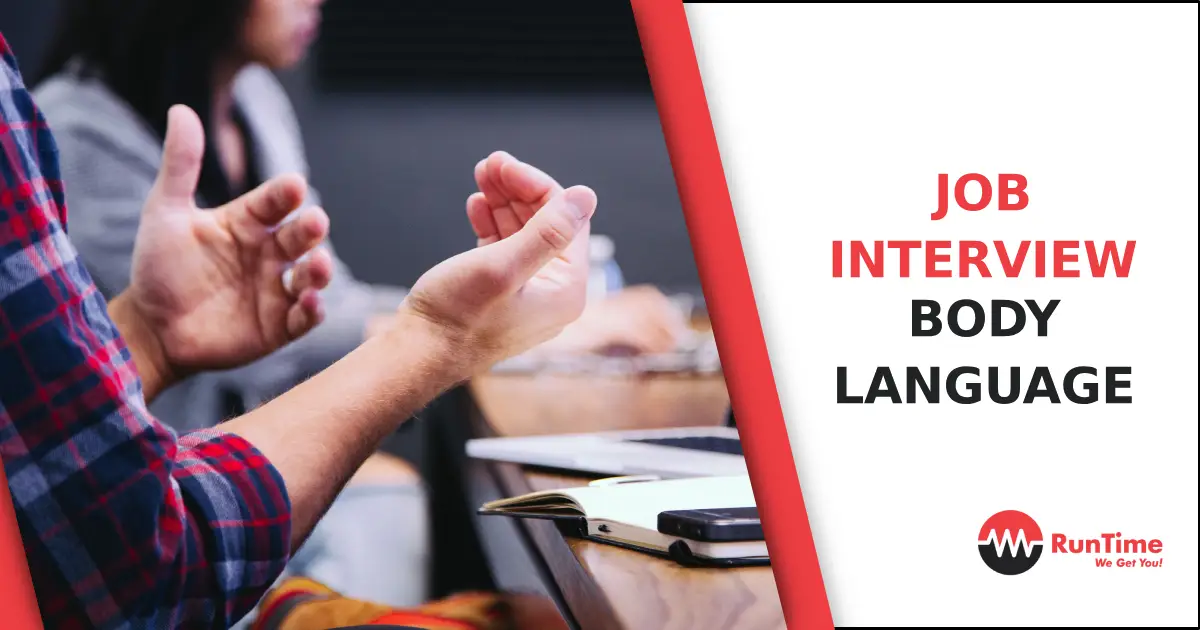In job interviews, effective communication goes beyond verbal expression. Job seekers who master the art of body language often leave a lasting impression on employers. In this comprehensive guide, we delve into 10 crucial body language tips that will set you apart in a job interview.
1. Confident Handshakes
A firm handshake is the cornerstone of a positive first impression. Ensure your handshake is confident but not overpowering. Aim for a brief and decisive grip, accompanied by direct eye contact. This non-verbal cue sets the tone for a professional interaction.
2. Posture Matters
Sit up straight and maintain good posture throughout the interview. A straight back communicates attentiveness and engagement. Avoid slouching, as it can convey a lack of interest or confidence. Leverage the power of good posture to project an image of self-assurance and competence.
3. Effective Eye Contact
Establishing and maintaining eye contact demonstrates sincerity and confidence. Strike a balance; too little may convey disinterest, while too much might be perceived as confrontational. Engage naturally, reflecting genuine interest in the conversation. Periodically breaking eye contact to avoid intensity, particularly during reflective moments, adds a touch of humility.
4. Mirroring Techniques
Subtly mirroring the interviewer’s body language builds rapport and fosters a connection. Align your gestures with theirs, showcasing adaptability and a sense of unity. This technique, when executed seamlessly, promotes a positive and harmonious atmosphere. Incorporating subtle mirroring, such as mirroring facial expressions and posture, signals compatibility and likability.
5. Gesture Appropriately
Express yourself through purposeful gestures. Avoid excessive or erratic movements that may distract from your message. Strategic, well-timed gestures emphasize key points and contribute to a dynamic and engaging conversation. A well-placed gesture can underscore your qualifications, leaving a memorable mark on the interviewer.
6. Mindful Facial Expressions
Your face is a canvas of emotions, and employers are keen observers. Maintain a neutral and approachable facial expression. Smile genuinely, especially during introductions and moments of agreement. This projects warmth and enthusiasm. Subtle facial expressions, such as nodding in agreement and raising eyebrows to express interest, enhance your communicative finesse.
7. Regulate Your Pace
Control the speed of your speech and movements. Speaking too quickly may be perceived as nervousness, while a slow pace might suggest lack of confidence. Find a rhythm that aligns with the conversation’s tone, emphasizing clarity and coherence. Pause strategically to allow for thoughtful responses, showcasing your ability to articulate ideas with precision.
8. Space Management
Be mindful of personal space, and respect boundaries to avoid discomfort. Adjust your distance based on cultural norms and the interview setting. A balanced spatial awareness reflects social acumen and consideration. Understanding the appropriate use of personal space conveys professionalism and cultural sensitivity, contributing to a positive impression.
9. Hand Gestures: Less is More
While gestures convey enthusiasm, excessive hand movements may be distracting. Opt for purposeful and measured gestures that complement your verbal communication. This ensures your message is clear and focused. Employing deliberate hand gestures enhances your message’s impact, allowing you to emphasize key points without overwhelming the conversation.
10. Closure with Confidence
As the interview concludes, reaffirm your interest with a confident closing statement. Stand, offer a final handshake, and express gratitude for the opportunity. This last impression should radiate assurance and leave a positive, lasting mark. Summarize key strengths and attributes, reinforcing your suitability for the position.
Related Articles:
Conclusion
Mastering body language is an invaluable skill in the professional realm. These ten tips provide a strategic framework to enhance your non-verbal communication during job interviews. By incorporating these practices, you position yourself as a polished candidate, ready to make a memorable impact on potential employers. Elevate your interview performance by combining verbal prowess with the subtle art of body language, ensuring you stand out as the ideal candidate.









